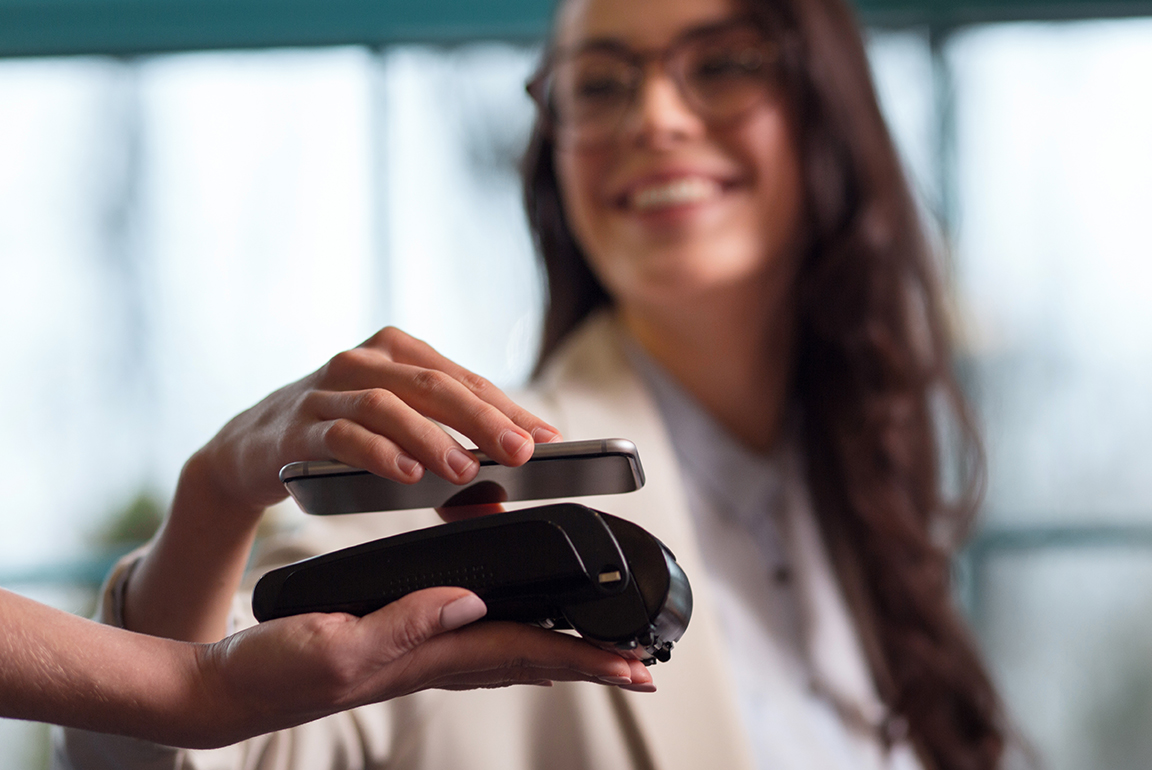Tips and tricks for using Apple Pay
Forgot your wallet and just realized at the checkout? No problem. Now you can access your money and pay right from your smartphone with Apple Pay.
What is Apple Pay?
This handy, intelligent and secure technology allows Manitobans with a debit or credit account to pay directly from their electronic wallet — all with a fingerprint and a tap.
With newer models of Apple mobile devices like the iPhone (6 and up), Apple Watch and iPad, this allows you to keep your debit and credit cards tucked away. Instead, the electronic Touch ID will verify a payment can be made with a single tap to the card reader. So instead of tapping your credit card or debit card to pay, you can tap your device.

Assiniboine Credit Union recently launched Apple Pay for their debit cards to help make shopping on the go a simpler task for ACU members.
If you haven’t already used Apple Pay, here are some of the great features available and tips to get started.
Tap to pay
If you have a debit or credit card that you can ‘tap,’ you may be able to add it to the Apple Pay wallet. Once you have added it to the wallet, you simply put your phone up to the transaction device and use your fingerprint to authorize payment. This also works with the Apple Watch, although you don’t need your fingerprint there. Just hold up your watch to the device and wait until it beeps — that’s it. Convenient, right?
One-click online payments
If you happen to be shopping online within the Safari Internet browser, members no longer have to pull their debit cards out from their wallets and type in details to make an online purchase. Instead, just click the Apple Pay logo in the Safari browser and you can make one-click payments using your iPhone. This only works in the Safari browser (sorry, Chrome and Explorer users), but it’s a handy tool nonetheless.

Security first
The one thing people tend to worry about when it comes to online and mobile payments is their safety. You can rest assured that Apple Pay is immensely safe to use.
While other contactless methods can be abused, Apple Pay is backed by your own physical identification — aka your fingerprint. Luckily, no one has the same fingerprint as you. Even if your phone gets stolen there’s no way for anyone to access your money without having your fingerprint on hand or knowing your passcode.
Related: What should I do when my phone is lost or stolen?
Even more security
There’s also the added bonus that the card within your Apple Pay wallet has its own virtual identification code. If you do lose your phone, you can simply deactivate electronic access to your card without having to deactivate your real card and get a new one.
Maximum spend limits

Unlike tapping your physical card, your Apple Pay transactions are protected by your fingerprint ID. The amount you can purchase is only limited by the merchant’s point-of-sale (POS) terminal or your debit/credit card POS and tap limits.
Multiple devices
Apple Pay doesn’t just exist on your iPhone, either. It can also be used on your Apple Watch and other devices. This includes:
- iPhone 6, 6 Plus, 6s, 6s Plus
- iPhone 7, 7 Plus
- iPhone 8, 8 plus
- iPhone X
- iPad Pro
- iPad Air 2
- iPad mini 3
- MacBook Pro with Touch ID
It should be noted that “tap to pay” is not available on any of the iPad models but it can be used for in-app purchases as well as person-to-person transactions.
Quick and easy setup
Setting Apple Pay up on your devices is very simple, and should take you just a couple minutes. Follow these steps:
- Launch the Wallet application from your Home screen.
- Tap on the + button (located in the right-hand corner).
- Take a photo of your debit (or credit) card, or manually enter your information.
- Agree to terms and conditions.
- You’ll receive a verification code either sent to your phone or email. Enter that code and voila.
To add another card to your electronic wallet, simply follow the same steps.
With Apple Pay, you will have one more option to make quick, reliable and secure payments directly from your account. If you have any questions, check out the FAQ page on our website.

17 tips to protect your account from fraud
Up Next
Sustainability: How ACU is turning words into action
A hand holding a seedling
For ACU, Pride radiates outward
“I’ve always wanted to instill a change in the world for the better,” says Cristina McCourt, Financial Account Manager Trainee and member of the ACU Pride Committee, an employee-led resource…
Royal Aviation Museum travels to its final destination—with ACU’s help
A stone’s throw from the main terminal of Winnipeg Richardson International Airport you’ll find one of Canada’s hidden gems, where the airplanes are a little more exciting than your typical…




